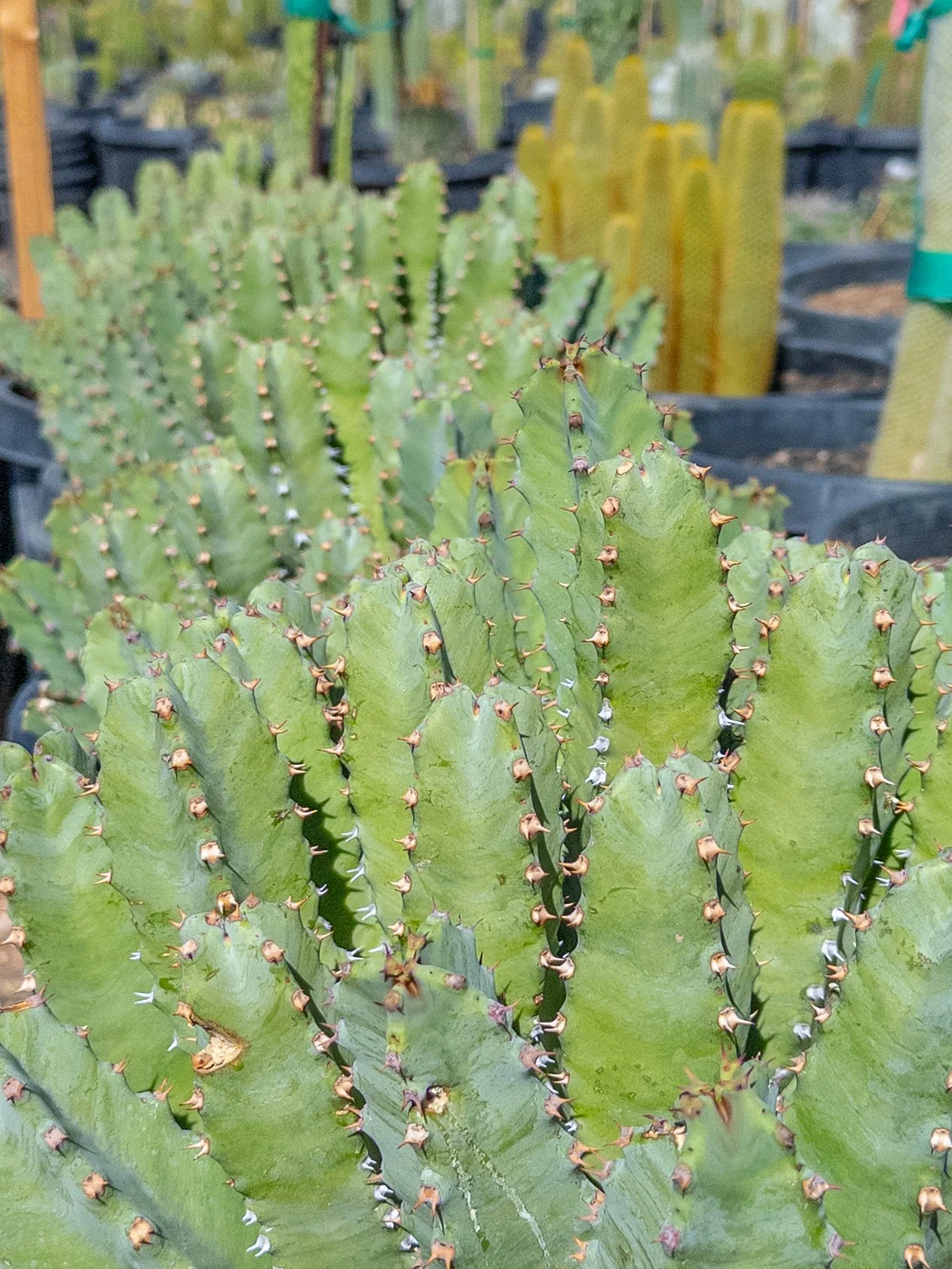 Image 1 of 2
Image 1 of 2

 Image 2 of 2
Image 2 of 2



False Saguaro / Giant Cardon
The Giant Cardon (Pachycereus pringlei) is the largest cactus species in the world, native to the deserts of northwestern Mexico, including Baja California and Sonora. It’s an iconic plant that closely resembles the saguaro cactus (Carnegiea gigantea) but can grow even larger.
Key Features:
Size:
It can grow up to 70 feet (21 meters) tall, with stems reaching 3 feet (1 meter) in diameter.
Its massive size and towering branches make it a striking feature in desert landscapes.
Structure:
The cardon has a tree-like appearance, with multiple upward-growing arms branching out from a central trunk.
Its ribs are well-defined, and spines cover the surface, though the spines are not as dense as those on some other cacti.
Flowers and Fruits:
Flowers are creamy white, bell-shaped, and bloom at night, often attracting bats for pollination.
The fruit is edible, round, and spiny, containing sweet pulp and seeds, which were traditionally used by indigenous peoples.
Longevity:
The cardon is incredibly long-lived, with some specimens estimated to be hundreds of years old.
The Giant Cardon (Pachycereus pringlei) is the largest cactus species in the world, native to the deserts of northwestern Mexico, including Baja California and Sonora. It’s an iconic plant that closely resembles the saguaro cactus (Carnegiea gigantea) but can grow even larger.
Key Features:
Size:
It can grow up to 70 feet (21 meters) tall, with stems reaching 3 feet (1 meter) in diameter.
Its massive size and towering branches make it a striking feature in desert landscapes.
Structure:
The cardon has a tree-like appearance, with multiple upward-growing arms branching out from a central trunk.
Its ribs are well-defined, and spines cover the surface, though the spines are not as dense as those on some other cacti.
Flowers and Fruits:
Flowers are creamy white, bell-shaped, and bloom at night, often attracting bats for pollination.
The fruit is edible, round, and spiny, containing sweet pulp and seeds, which were traditionally used by indigenous peoples.
Longevity:
The cardon is incredibly long-lived, with some specimens estimated to be hundreds of years old.
































